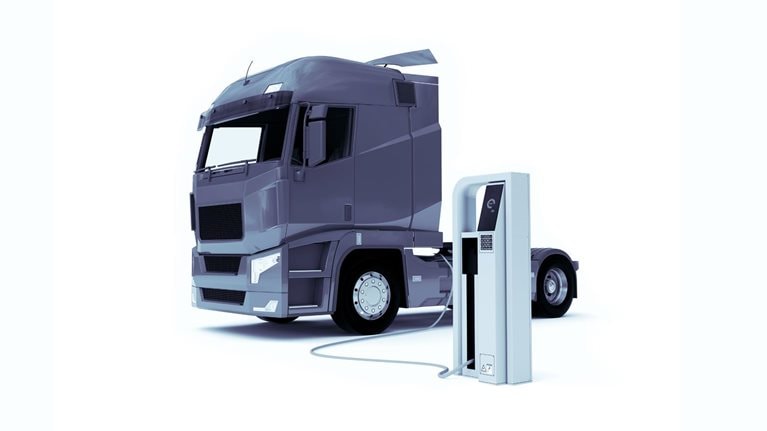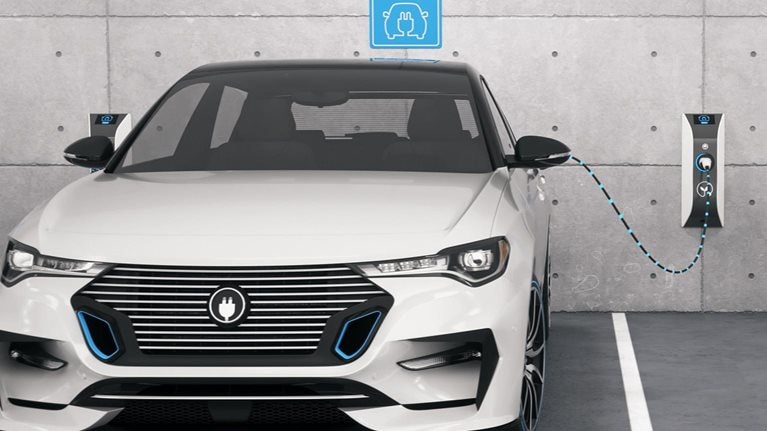In less than a decade, electric powertrains have gone from being a niche product to the almost inevitable choice for tomorrow’s passenger vehicles. In line with this trend, medium- and heavy-duty trucks are likely to follow the same path.
Our new report, Preparing the world for zero-emission trucks, examines trends related to these vehicles and the future marketplace. Topics discussed include essential enablers for encouraging at-scale adoption of ZE vehicles, underlying technologies, and investment and infrastructure needs. The report also examines how the trucking value chain will evolve.
The essential enablers
Three main factors will shape the pathway to the decarbonization of road freight. First, regulations will be critical. Some governments have already introduced major incentives and guidelines to promote ZE vehicles, such as national programs that include subsidies or tax breaks for ZE trucks, components, and infrastructures; discounts on road tolls; tightened fleet emission standards; and sales bans on internal-combustion-engine (ICE) vehicles. Some regional and city governments are complementing these actions with ZE vehicle procurement targets for their fleets or entry bans for ICE vehicles. Such regulations might accelerate the deployment of battery electric vehicles (BEV) and fuel cell electric vehicles (FCEV) in this decade.
Technology and cost issues will also affect the uptake of ZE trucks. To ensure their at-scale deployment, total cost of ownership (TCO) is important. While some regulatory interventions seek to reduce TCO for ZE trucks, industry players are also accelerating innovations for key ZE powertrain components. Their main goal is to make ZE trucks economically competitive with their diesel counterparts. In the next decade, there could be major technological advances that continue to decrease costs for fuel cell systems, batteries, charging hardware, and other components.
Finally, truck market dynamics and infrastructure will have a large impact on the ZE market. As awareness increases about climate change, both fleet operators and OEMs have an incentive to accelerate their deployment of ZE trucks. But to reach scale, charging networks and the hydrogen-refueling infrastructure must expand. The necessary rollout will require substantial investments, including those designed to increase capacity in electricity grids.
Would you like to learn more about our Automotive & Assembly Practice?
Technologies for zero-emission trucks
Battery and fuel cell electric powertrains will be the go-to technologies for ZE trucks, mainly because of their benefits related to emissions and TCO. Compared with diesel trucks, both BEV and FCEV trucks have more payload restrictions because of the weight of the battery or the size of the hydrogen tank. At this point, however, many regulators allow for exceptions in vehicle dimensions or weight to balance out these disadvantages. When FCEVs and BEV trucks represent a larger share of the fleet, it may be difficult for regulators to continue to make such exceptions, given the current infrastructure. This may not be an issue, however, because improved battery energy density and higher-pressure or liquid hydrogen tanks may help to reduce the payload gap.
Other zero-emission options include hydrogen combustion powertrains, which feature modified versions of natural-gas-combustion engines. Companies can thus adapt them and put them on the market faster than FCEV powertrains. Hydrogen combustion trucks would still need access to hydrogen-refueling infrastructure, however, and this remains scarce. In addition, hydrogen combustion engines will likely have lower fuel efficiency than FCEV powertrains at low and medium loads, rendering them uncompetitive for typical truck operations.
Renewable diesel (RD), renewable natural gas (RNG), and other renewable and synthetic fuels can also support the faster decarbonization of existing diesel fleet and compressed natural gas (CNG) or liquefied natural gas (LNG) fleets. They have the advantage of being compatible with current infrastructure and powertrains and they are commercially and technically available. Although this availability is currently limited, production scale-up is expected to continue, with a focus on demand from aviation, marine, chemical, and industrial sectors. Without regulatory support, RNG and RD will remain costlier than fossil fuels and will not be cost competitive with BEV or FCEV powertrains in most road transport applications in the long term.
A new world with much uncertainty
Beyond choice of powertrain, many other future developments within the market for ZE vehicles remain uncertain. Overall, we believe the following factors could be among the most important forces to shape the industry’s future:
- Technology development costs: Battery costs have already dropped over the past ten years and are expected to decline further by 2030. Additional reductions are still needed to make these technologies economically viable.
- Operational characteristics: The operational constraints for BEV and FCEV trucks include payload restrictions (due to battery weight), recharging times, and limited ranges; for FCEVs, payload restrictions are also an issue because of the large hydrogen tanks required.
- Infrastructure availability: Both BEV and FCEV trucks require new infrastructure to ensure widespread usage. That includes a more robust electric grid, as well as hydrogen refueling stations.
Beyond these forces, country-specific variations in energy prices and fleet-specific considerations may lead operators to prefer one technology over another. For example, the cost of batteries rises as the range they provide increases, so operators that primarily use trucks over short to medium distances, predictable routes, or both may be more likely to use BEVs. For long-haul use cases with less predictable routes, FCEVs can be advantageous given their shorter refueling times and lower up-front costs. Overall, BEV trucks may have an advantage in the ZE market because they will be available at scale earlier than FCEV trucks. They will also benefit from synergies with technological advances in electric passenger cars.
Evolving supply and demand for ZE trucks
Many fleet operators have announced decarbonization targets, and more than 70 models of ZE trucks are expected to be available by 2040. In that year, fleet operators in Europe and North America will be able to choose from more than 70 different models, compared with almost 130 models available with diesel powertrains. Production volumes will remain low, however, at fewer than 30,000 units annually through 2024 in Europe and North America. Production volumes in China are already double this volume output.
Demand for ZE trucks is expected to increase substantially, partly because total cost of ownership is expected to fall by about 10 percent over the next five to ten years. By 2035, the majority of new trucks sold in China, the European Union, and the United States will be electric (exhibit).

Image description:
Two side-by-side line charts show how the majority of new trucks sold in the US, EU, and China will be electric. Each line chart has three lines representing the US, EU, and China and show data from 2022 to 2040. The left-hand chart shows the share of battery electric vehicle (BEV) and fuel cell electric vehicle (FCEV) sales of new medium- and heavy-duty trucks. The right-hand chart shows the share of BEV and FCEV parc (proportion of car ownership per thousand people) of new medium- and heavy-duty trucks.
End of image description.
By 2040, 85 percent of new trucks sold and 40 percent of all trucks on the road are expected to have a ZE powertrain. To meet future demand, the industry will need additional battery production capacity equal to 12 gigafactories by 2030. What’s more, ZE trucks will add about 6 percent to today’s electricity demand and require $450 billion in infrastructure investments by 2040.

Why most eTrucks will choose overnight charging
Reshuffling the trucking value chain
The transition to ZE vehicles will disrupt the entire truck value chain and its players. New players, partnerships, and products are expected. The groups that will play a major role include large OEMs going directly into cell and pack manufacturing; incumbent tier-one suppliers trying to enter the field; and pure battery integrator players, which often specialize in packaging.
Some of the major disruptions that may occur include the following:
- A shift toward trucks-as-a-service. This change will affect vehicle provision, financing, aftermarket parts and services, infrastructure, and energy provision.
- An increased preference for leasing. Because of the high up-front capital expenditure needed for producing ZE trucks, as well as the greater technology risks involved in the shift to a new technology, fleet providers will prefer leasing options that also take care of charging-infrastructure provisions and maintenance.
- Greater emphasis on partnerships. Given their smaller scale of operations, individual truck companies are not large enough to participate in every step of the value chain. Instead, they could benefit by forming partnerships that give them access to critical products, such as batteries.
Download Preparing the world for zero-emission trucks, the full report on which this article is based. (PDF)


